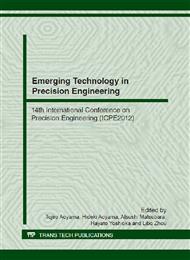p.362
p.368
p.374
p.380
p.386
p.392
p.398
p.404
p.410
Proposal of Ball End-Milling Condition Decision Methodology Using Data-Mining from Tool Catalog Data
Abstract:
Machining is often performed by a machining center using various cutting tools and conditions for different shapes and materials. Recent improvements in CAM system make it easier for even unskilled engineers to generate NC programs. In the NC program, the end-milling conditions are decided by engineers. However, engineers need to decide the order of the process, cutting tool selection, and the end-milling conditions on the basis of their expertise and background knowledge because the CAM system cannot automatically decide. Data-mining methods were used to support decisions about end-milling conditions. Our aim was to extract new knowledge by applying data-mining techniques to a tool catalog. We used both hierarchical and non-hierarchical clustering of catalog data and also used applied multiple regression analysis. We focused on the shape element of catalog data and we visually grouped ball end-mills from the viewpoint of tool shape, which here meant the ratio of dimensions, by using the k-means method. We also found an expression for calculating end-milling conditions, and we compared the calculated with the catalog values.
Info:
Periodical:
Pages:
386-391
Citation:
Online since:
November 2012
Price:
Сopyright:
© 2012 Trans Tech Publications Ltd. All Rights Reserved
Share:
Citation:


